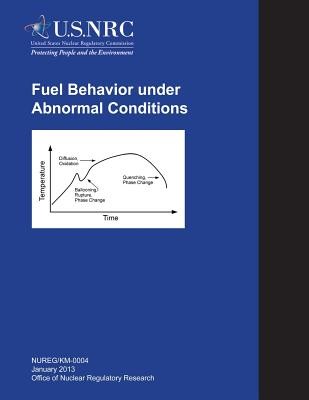
- We will send in 10–14 business days.
- Author: U S Nuclear Regulatory Commission
- Publisher: CreateSpace Independent Publishing Platform
- Year: 2014
- Pages: 58
- ISBN-10: 1499628994
- ISBN-13: 9781499628999
- Format: 21.6 x 28 x 0.3 cm, softcover
- Language: English
- SAVE -10% with code: EXTRA
Fuel Barrier Under Abnormal Conditions (e-book) (used book) | bookbook.eu
Reviews
Description
Under normal operating conditions, cladding and core structural materials operate around 300 degrees Celsius (C), and fuel pellets experience peak temperatures below 2,000 degrees C at the pellet centerline. At these temperatures, fuel cladding integrity is maintained, and fission products are contained within the fuel rods. However, under some abnormal conditions, higher temperatures and other conditions significantly alter the behavior of these materials. These conditions can threaten core coolability and lead to fission product release. This NUREG report considers the following two types of accident conditions: (1) reactivity-initiated accidents and (2) loss-of-coolant accidents. This report describes the fuel behavior of each accident condition from basic concepts to the current state of the art. It also mentions safety criteria, references the classic experimental work in each of these areas, and presents equations and figures that permit some quantitative evaluations.
EXTRA 10 % discount with code: EXTRA
The promotion ends in 18d.18:09:26
The discount code is valid when purchasing from 10 €. Discounts do not stack.
- Author: U S Nuclear Regulatory Commission
- Publisher: CreateSpace Independent Publishing Platform
- Year: 2014
- Pages: 58
- ISBN-10: 1499628994
- ISBN-13: 9781499628999
- Format: 21.6 x 28 x 0.3 cm, softcover
- Language: English English
Under normal operating conditions, cladding and core structural materials operate around 300 degrees Celsius (C), and fuel pellets experience peak temperatures below 2,000 degrees C at the pellet centerline. At these temperatures, fuel cladding integrity is maintained, and fission products are contained within the fuel rods. However, under some abnormal conditions, higher temperatures and other conditions significantly alter the behavior of these materials. These conditions can threaten core coolability and lead to fission product release. This NUREG report considers the following two types of accident conditions: (1) reactivity-initiated accidents and (2) loss-of-coolant accidents. This report describes the fuel behavior of each accident condition from basic concepts to the current state of the art. It also mentions safety criteria, references the classic experimental work in each of these areas, and presents equations and figures that permit some quantitative evaluations.


Reviews